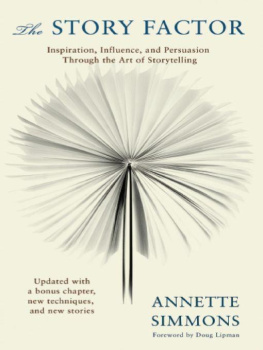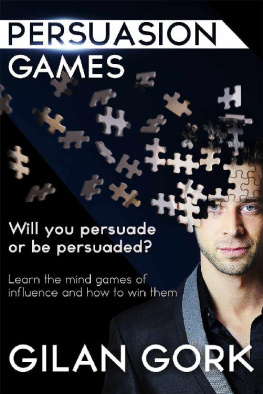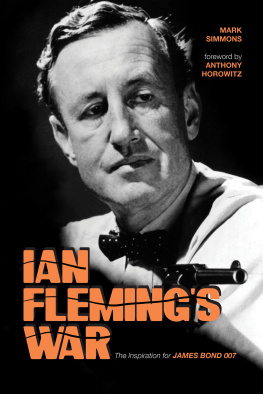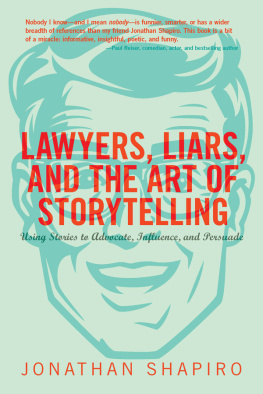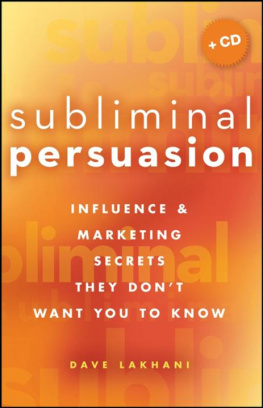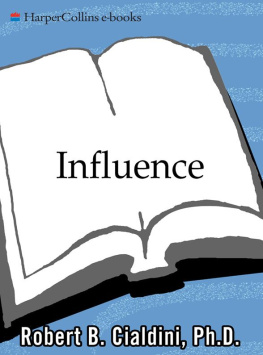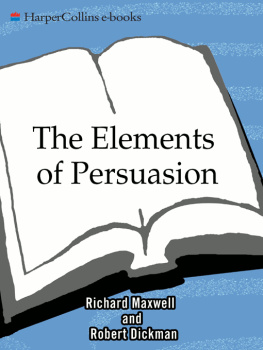Annette Simmons - The Story Factor: Inspiration, Influence, and Persuasion through the Art of Storytelling
Here you can read online Annette Simmons - The Story Factor: Inspiration, Influence, and Persuasion through the Art of Storytelling full text of the book (entire story) in english for free. Download pdf and epub, get meaning, cover and reviews about this ebook. year: 2009, publisher: Basic Books, genre: Business. Description of the work, (preface) as well as reviews are available. Best literature library LitArk.com created for fans of good reading and offers a wide selection of genres:
Romance novel
Science fiction
Adventure
Detective
Science
History
Home and family
Prose
Art
Politics
Computer
Non-fiction
Religion
Business
Children
Humor
Choose a favorite category and find really read worthwhile books. Enjoy immersion in the world of imagination, feel the emotions of the characters or learn something new for yourself, make an fascinating discovery.
- Book:The Story Factor: Inspiration, Influence, and Persuasion through the Art of Storytelling
- Author:
- Publisher:Basic Books
- Genre:
- Year:2009
- Rating:5 / 5
- Favourites:Add to favourites
- Your mark:
- 100
- 1
- 2
- 3
- 4
- 5
The Story Factor: Inspiration, Influence, and Persuasion through the Art of Storytelling: summary, description and annotation
We offer to read an annotation, description, summary or preface (depends on what the author of the book "The Story Factor: Inspiration, Influence, and Persuasion through the Art of Storytelling" wrote himself). If you haven't found the necessary information about the book — write in the comments, we will try to find it.
The Story Factor: Inspiration, Influence, and Persuasion through the Art of Storytelling — read online for free the complete book (whole text) full work
Below is the text of the book, divided by pages. System saving the place of the last page read, allows you to conveniently read the book "The Story Factor: Inspiration, Influence, and Persuasion through the Art of Storytelling" online for free, without having to search again every time where you left off. Put a bookmark, and you can go to the page where you finished reading at any time.
Font size:
Interval:
Bookmark:
Table of Contents
ALSO BY ANNETTE SIMMONS
A Safe Place for Dangerous Truths
Territorial Games

This book is dedicated to the memory of
Dr. James Noble Farr.
A difference, to be a difference
must make a difference.
Acknowledgments
I am deeply indebted to Doug Lipman for teaching me so much about storytelling. For years he has been my coach and mentor. This book would not have been possible if it werent for Doug Lipman.
Thank you, to all the other wonderful people who have contributed to my education: Jenny Armstrong, Cheryl De Ciantis, Cindy Franklin, Stephen Gilligan, Ray Hicks, Kenton Hyatt, Pam McGrath, Jay OCallahan, Ed Stivender, and so many others.
People who have generously shared their stories include Robert Cooper, John Kristoff, Cindy Franklin, David Finch, Dick Mueller, Marti Smye, Steve Wirth, and all of the wonderful participants in the Western Management Development Centers ongoing Management Development Seminars.
Thank you to Pam Wilhelms for taking a risk on teaching storytelling as a leadership skill and to Alan Downs, who tenaciously insisted I write this book.
I am grateful, too, for the tenderish editing from my longtime friend Sherry Decker. Thank you, Sherry.
Many of the stories in this book came from a few very special books: Wisdom Tales from Around the World by Heather Forest and Peace Tales by Margaret Read Macdonald have been major resources and I highly recommend both of these books. Storytelling Magazine has also been a wonderful resource.
Since the first publication of this book I have more people to thank. In addition to those listed above, I am very grateful to Karen Dietz, Elizabeth Ellis, Millie Jackson, Delanna Reed, Jo Radner, Brian Sturm, and Joseph Sobolall vital contributors to the storytelling community.
Meena Wilson is a great friend and travel partner. Id never have met a Maharaja or slept in a palace without her. Betsy Carlson, PhD gave me the opportunity to test the social justice power of PhotoStory and together we learned that apathy has its reasons and story can still turn apathy inside out. Mitch Maxson finally got me to play with digital storytelling (although the hard work was already done by Gary Magder). Perry Mandanis, MD is a wonderful friend and a wonderful psychiatrist and sometimes both at the same time. Karen Profita of Childrens Miracle Network welcomed me into the world of helping childrens hospitals and my soul overflows with gratitude. Kathryn Young and the entire Veterans Administration medical community take storytelling and run with it. They keep me on my toes. Debby Blatt is the best translator of good intentions into action that I know.
Jacqueline Messick runs my life and does it with kindness and aplomb. Mary Ellen Joyce of the Brookings Institute gives me hope that I might someday be as good as she thinks I am. Michael Gushue sends me poetry that fills my lungs with oxygen just when it feels as if the air is sucked dry. Jay PooleI dont know what I did to deserve youbut Im grateful. Ann Clancy is the best coach in the world.
Special thanks to Cara Mattison, Neal Massey, Paul and Terry Klaassen of Sunrise Senior Living for graciously sharing their talents and stories. Thanks also to Lea Thau for her contribution to the Moth and to my own learning.
And finally, thank you Bill Garrot for filling my life with love, chocolate, and laughter.
Annette Simmons
Annette@groupprocessconsulting.com
Foreword
It didnt seem like a dangerous situation. I was telling stories at a green-hilled conference center. The balmy Virginia weather was relaxing the Boston winters grip on my body. The audience of storytelling enthusiasts was welcoming and supportive.
Then, out of the crowd, I noticed one shining face. That happens sometimes: a listeners face seems to gather all the power of a story and reflect it back like a golden mirror. When that happens, I know Ive gotten my story across. More, I know Ive been seen; Ive made a connection.
Little did I know where that moment of connection would lead me.
Until that day, I had been a full-time resident of the storytelling world, performing and teaching in colleges, conferences, and festivalsin any corner where interest in story had taken root. Since the first National Storytelling Festival in 1973, enough of these venues had sprung up to support a few hundred full-time storytellers in the U.S. Along with the tens of thousands who told part-time for money, as a hobby, or who just came to listen, tellers like me constituted the storytelling revival.
Back to that shining face. After the performance, I sought her out. Immediately, I realized she was an anomaly in that group of teachers, pastors, religious educators and storytelling fans: Annette Simmons and her friend Cheryl DeCiantis came from the bigger world of business. Not only that, they were excited about what storytelling could offer that world.
Having survived for 25 years on the fringes of our economic system, I was suspicious. Were they sure that executives, managers, sales peoplethe whole bottom line culturewere interested in and could profit from what I was doing? Was there really a demand for storytelling in the wider world?
If anyone could convince me, it was Annette. At that time, she was a full-time corporate trainer, specializing in tough situations, the ones where a room full of hardboiled executives came to learn how to fix all those problem people they seemed to run into all the time. She could help them switch from the brute force approach of a bully to the elegant tactics of a martial arts master.
Not only that, she had an uncanny ability to see the big picture, to understand the overall significance of storytelling without losing sight of the gritty details that make a story work. She felt the wonder of this indirect but amazingly powerful form of communication. And her background in advertising communications didnt hurt, either: she knew how to boil down the essence of an idea and communicate it with lightning-bolt force.
Soon, I found myself with a student and a mentor, all in the same person. I helped her refine her already substantial appreciation of storytelling. She helped me become an emissary of storytelling to the corporate world. And now she has written a book that, like all great books, points out the emerging truth in a way that allows us to stop overlooking it.
What is so special about The Story Factor? It brings together three trends that have belonged together all along. First: the rebirth of the storytelling art around the developed world and the subsequent appreciation for the mental and emotional processes it unleashes. Second: the emerging realization in the business community that thriving organizations need whole persons working for themthat anything less cheats both the individual and the firm. Finally: the successes of practical psychologies in helping us achieve lasting influence through respectful relationships.
Annettes book walks its talk. She uses stories convincingly throughout. She treats the reader with respect. She emphasizes what great leaders have always known: the elemental role of storytelling in motivating, persuading, and gaining eager cooperation. And she describes this, for the first time, with a clarity and passion that makes it intelligible and usable for people from all walks of life.
When you read this book, you may see Annettes light shining through it. If you do, beware! You will learn a thousand secrets for influencing others in lasting ways. And, like me, you will find yourself forever changed.
Doug Lipman
doug@storydynamics.com
Introduction
In 1992, I sat in the cool October breeze, surrounded by 400 others in a tent in Jonesborough, Tennessee, waiting to hear the next storyteller. The group ranged from rich to poor, city types to country folk, professors to sixth-grade graduates. Next to me was a gray-bearded farmer-type in overalls with an NRA button on his cap. As an African American man got up to speak, this man turned to his wife and whispered something in an irritated tone that included the word nigra. I mentally dared him to say it again. Instead he folded his arms and started examining the construction of the tents roof. The African American storyteller began to tell us his story of a lonely night during the 1960s deep in the heart of Mississippi. He and the six other activists feared the dangers they would face by marching the next morning. He described how they stared into the campfire, as one of them began to sing. The singing calmed their fears. His story was so real we could feel the fear and see the light of the campfire. Then he asked us to sing with him. We did. Swing Low, Sweet Chariot vibrated out of our throats like a big 400-pipe organ. Next to me, the farmer man sang too. I saw a tear roll down his rough red cheek. I had just witnessed the power of story. If a radical African American activist could touch the heart of an ultraconservative racist farmerwell, I wanted to know how to do that, too.
Next pageFont size:
Interval:
Bookmark:
Similar books «The Story Factor: Inspiration, Influence, and Persuasion through the Art of Storytelling»
Look at similar books to The Story Factor: Inspiration, Influence, and Persuasion through the Art of Storytelling. We have selected literature similar in name and meaning in the hope of providing readers with more options to find new, interesting, not yet read works.
Discussion, reviews of the book The Story Factor: Inspiration, Influence, and Persuasion through the Art of Storytelling and just readers' own opinions. Leave your comments, write what you think about the work, its meaning or the main characters. Specify what exactly you liked and what you didn't like, and why you think so.

